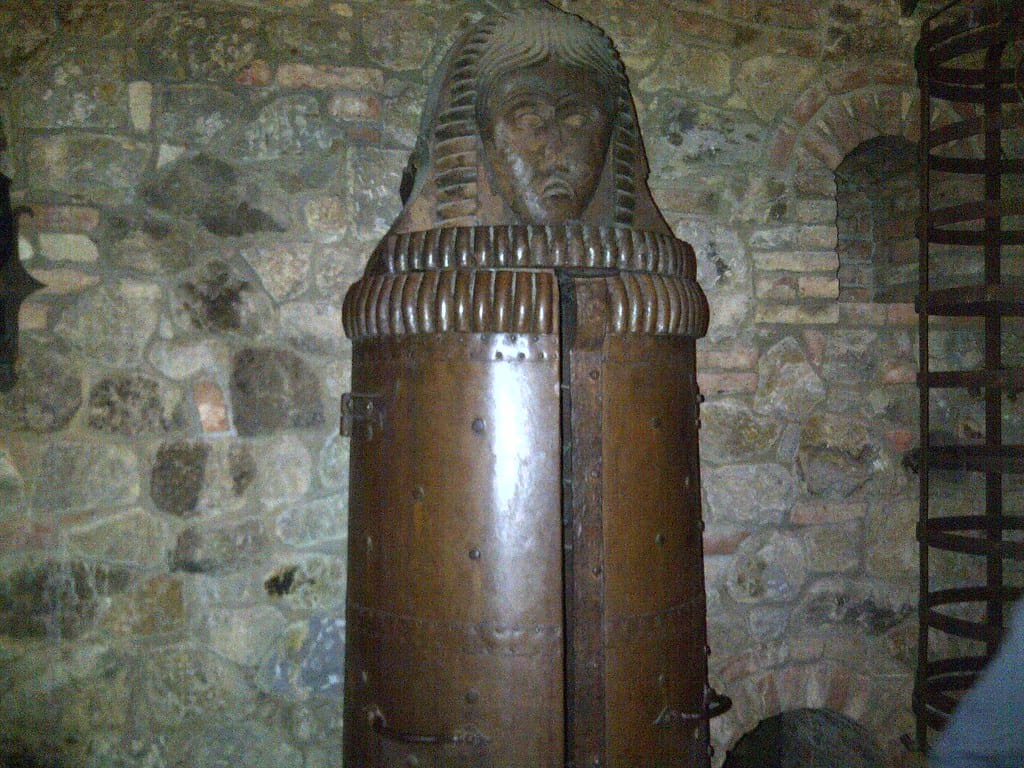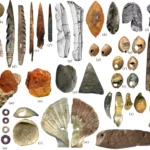You’ve probably heard of the Iron Maiden, right? It’s that gruesome torture device that’s been featured in movies and books for ages. But did you know that there’s a lot of uncertainty about whether it was ever actually used? Let’s dive into the history and see if we can separate fact from fiction about this creepy legend.
Debunking the Iron Maiden Myth
The Iron Maiden: A Myth That Won’t Die
Ever heard of the iron maiden? You know, that terrifying metal cabinet shaped like a person, with spikes on the inside just waiting to close in on its victim? It’s a pretty gruesome image, and it’s been the star of countless horror movies and books. But here’s the thing: it’s probably all a big fat lie.
That’s right, the iron maiden was likely never a real medieval torture device. It’s likely a myth, a fabrication that somehow managed to worm its way into our collective consciousness. But how did this happen?
The Birth of a Myth
The story of the iron maiden actually popped up centuries after the medieval period, in the 18th century. It was a time when people were fascinated by the “barbarity” of the Middle Ages, and stories of gruesome torture devices were all the rage. Some folks even started making these spiky cabinets and putting them in museums, claiming they were authentic medieval relics.
And just like that, the myth of the iron maiden was born.
Real Medieval Torture: Less Spiky, More Brutal
That’s not to say that medieval torture didn’t exist. It was a brutal time, and people were often punished in horrific ways. But the methods they used were much more practical (and just as cruel). Think things like the rack, which stretched people until their joints popped, or thumbscrews, which crushed, well, thumbs.
Why We Love a Good Horror Story
So, if the iron maiden was likely a fake, why are we still so fascinated by it? Well, humans have a morbid curiosity about the dark side of things. We love to be scared, and the idea of being impaled by spikes in a claustrophobic metal box is definitely scary. Plus, it plays into our existing ideas about the Middle Ages as a dark and violent period.
The Iron Maiden: A Lesson in Historical Accuracy
The story of the iron maiden is a reminder that we need to be critical of the information we consume, especially when it comes to history. Just because something is presented as fact doesn’t mean it’s true. It’s always a good idea to do your own research and look for evidence to support any claims you come across.
The Enduring Legacy of a Myth
The iron maiden may be a myth, but it’s a myth that has endured for centuries. It’s become a symbol of cruelty and torture, and it continues to capture our imaginations. And maybe that’s the most interesting thing about it: even though it’s not real, it still has the power to make us shudder.
Iron Maidens: Fact vs. Fiction
Okay, so you’ve probably heard of the iron maiden, right? It’s this super creepy metal cabinet with spikes on the inside, and the whole thing just screams “medieval torture device.” It’s enough to give anyone nightmares! But here’s the thing: historians are pretty skeptical about whether it was actually used for torture back in the day.
Think about it, the earliest stories we have about these spiky cabinets only popped up centuries later, around the 1700s. It’s kind of fishy, don’t you think? This has led some experts to believe that the whole iron maiden thing might be more myth than reality. They suggest that it was probably a product of sensationalism, a way to make the Middle Ages seem even more brutal than they were.
However, even though there’s no hard proof that the iron maiden was a real torture device, the image has stuck around. You see it everywhere – in movies, TV shows, even in museums! It’s almost like we have this morbid fascination with the idea of it, even if it’s not entirely true.
So, the next time you see an iron maiden, remember that it might be more fiction than fact. While it’s likely that people in the Middle Ages used some pretty gruesome torture methods, the iron maiden is probably just a scary story that got blown out of proportion.
Exploring the Reality of Medieval Torture
So, we’ve talked about how brutal things could get back in the Middle Ages. But one torture device often whispered about, the Iron Maiden, is actually not from that time period at all. It’s true! Despite its scary reputation, there’s no real proof that the Iron Maiden was ever used to punish people back then.
The first time someone wrote about it was in the 1700s, a long time after the Middle Ages were over. A historian named Johann Philipp Siebenkees described it being used in 1515. But because this was written so much later, many historians are skeptical about whether it really happened.
It seems like the idea of the Iron Maiden became popular during a time when people were fascinated by dark and creepy things. Think of it like a scary story that got out of hand! Writers and museums might have even made the Iron Maiden more famous because people found it so chilling.
Now, just because the Iron Maiden was probably a myth, doesn’t mean that medieval punishments weren’t truly awful. They absolutely were. People accused of crimes faced horrifying devices like the rack, which stretched their bodies, the breaking wheel, designed to, well, break bones, and the Judas cradle, a pyramid-shaped seat meant to inflict unimaginable pain. These were all methods used to force confessions or punish the accused.
The interesting thing is, even though it probably never existed in the Middle Ages, the Iron Maiden still makes us shudder. It’s become a powerful symbol of cruelty and suffering that continues to show up in books, movies, and even music.
The Iron Maiden: A Myth That Endures
So, we’ve already established that iron maidens are the stuff of nightmares – but how much of that is rooted in reality? Turns out, not much at all. While the image of a spiked metal coffin is enough to send shivers down anyone’s spine, actual historical evidence suggests iron maidens never even existed in the way they’re often depicted.
The idea itself seems to have first cropped up in the 1700s. German historian Johann Philipp Siebenkees wrote about an iron maiden being used in the 1500s, but his claims were based on rumors and whispers, not hard proof. This makes sense given how much the 18th century loved to romanticize the darker side of the Middle Ages.
Fast forward to the 1800s, and the iron maiden myth really took off. Writers and showmen, eager to capitalize on gruesome tales, turned the iron maiden into a star attraction. They built their own versions, adding dramatic flair and medieval-looking details, and displayed them as genuine torture devices. As a result, the iron maiden solidified its place in popular culture, despite its shaky foundations.
Now, don’t get me wrong – torture was a very real and brutal part of life in medieval times. The rack, thumbscrews, the Judas cradle – these were all terrifying instruments of pain used to punish, extract confessions, and crush any hint of rebellion. Horrifying? Absolutely. But there’s no evidence to suggest the iron maiden was ever part of that grim toolkit.
So why do we remain so captivated by this fictional torture device? It probably has something to do with our innate fascination with the darker aspects of human nature. The iron maiden, with its promise of unimaginable pain and confinement, taps into that morbid curiosity, making it a popular subject in art, literature, and even film.
The important takeaway here is to separate fact from fiction. The iron maiden serves as a powerful reminder that history is often distorted and sensationalized. While it might make for a chilling story, the truth is, the iron maiden belongs in the realm of myth and legend, not historical reality.
Explore the grim history of torture and step into the terrifying depths of the infamous iron maiden torture device. For a glimpse into the heart of the ancient Roman empire, marvel at the preserved images of Pompeii and witness the daily lives of those who lived amidst the shadow of Vesuvius’ wrath.
- Crypto Quotes’ Red Flags: Avoid Costly Mistakes - June 30, 2025
- Unlock Inspirational Crypto Quotes: Future Predictions - June 30, 2025
- Famous Bitcoin Quotes: A Deep Dive into Crypto’s History - June 30, 2025
















